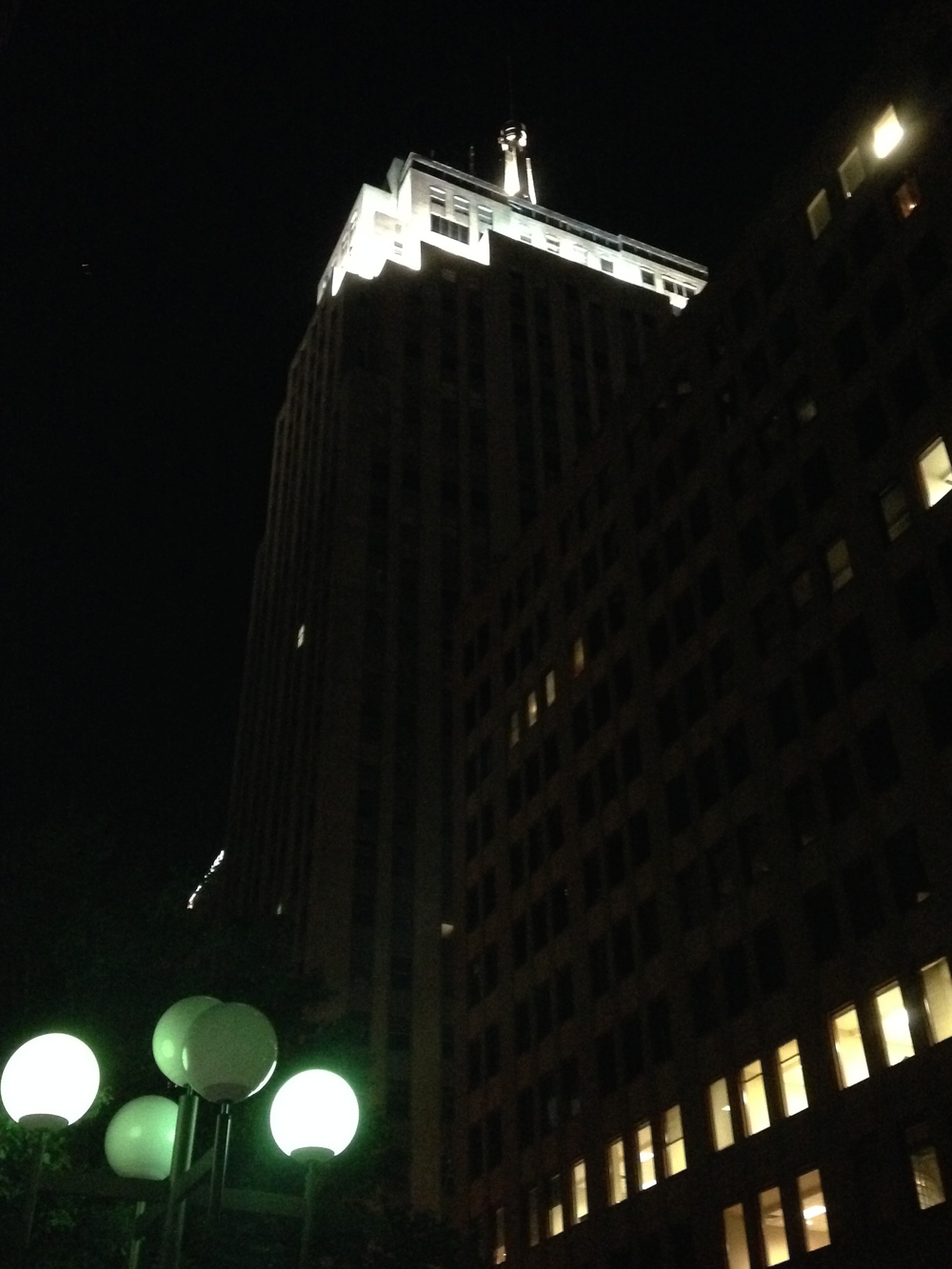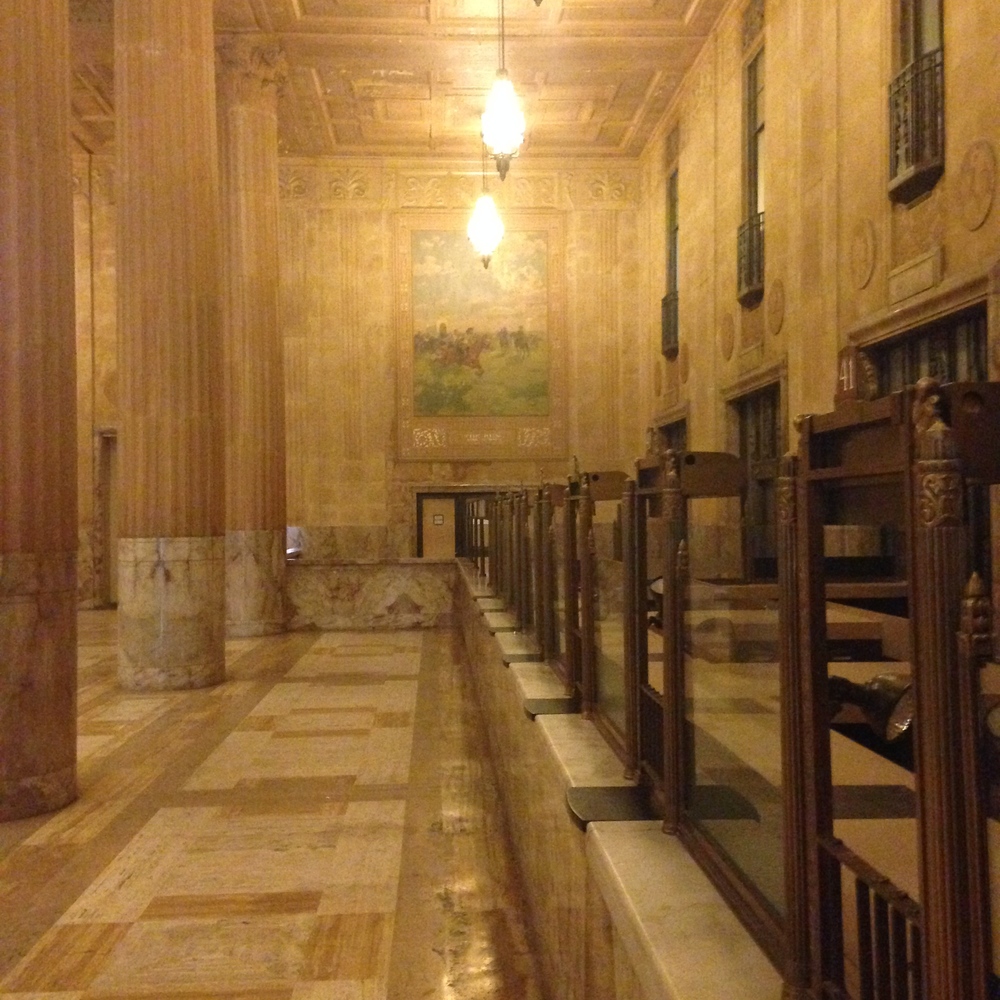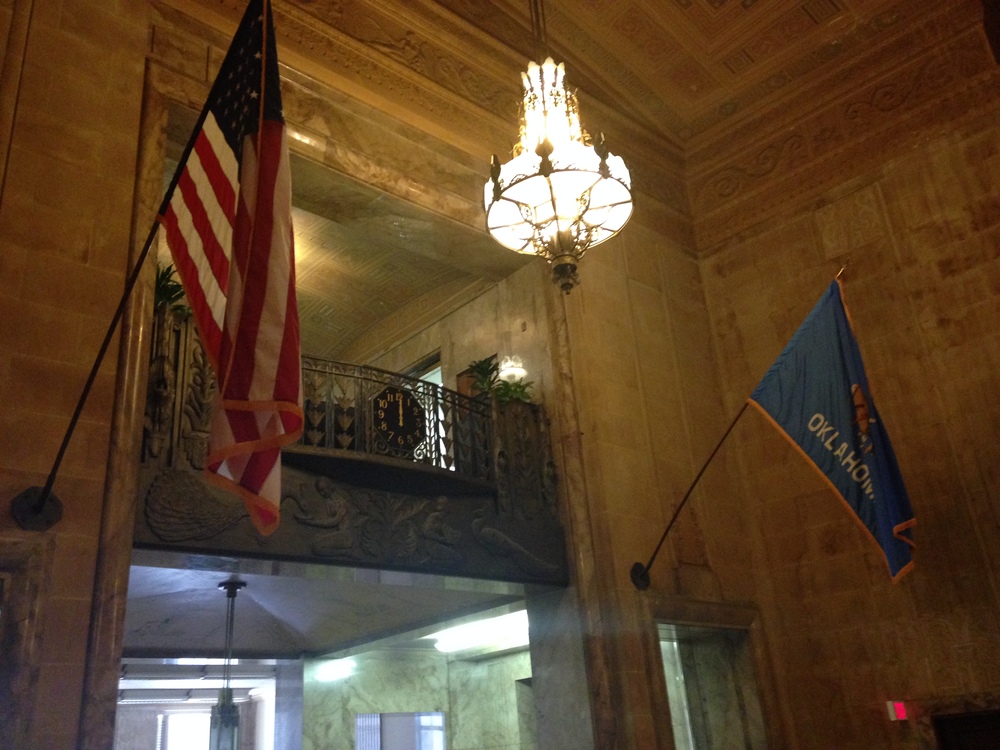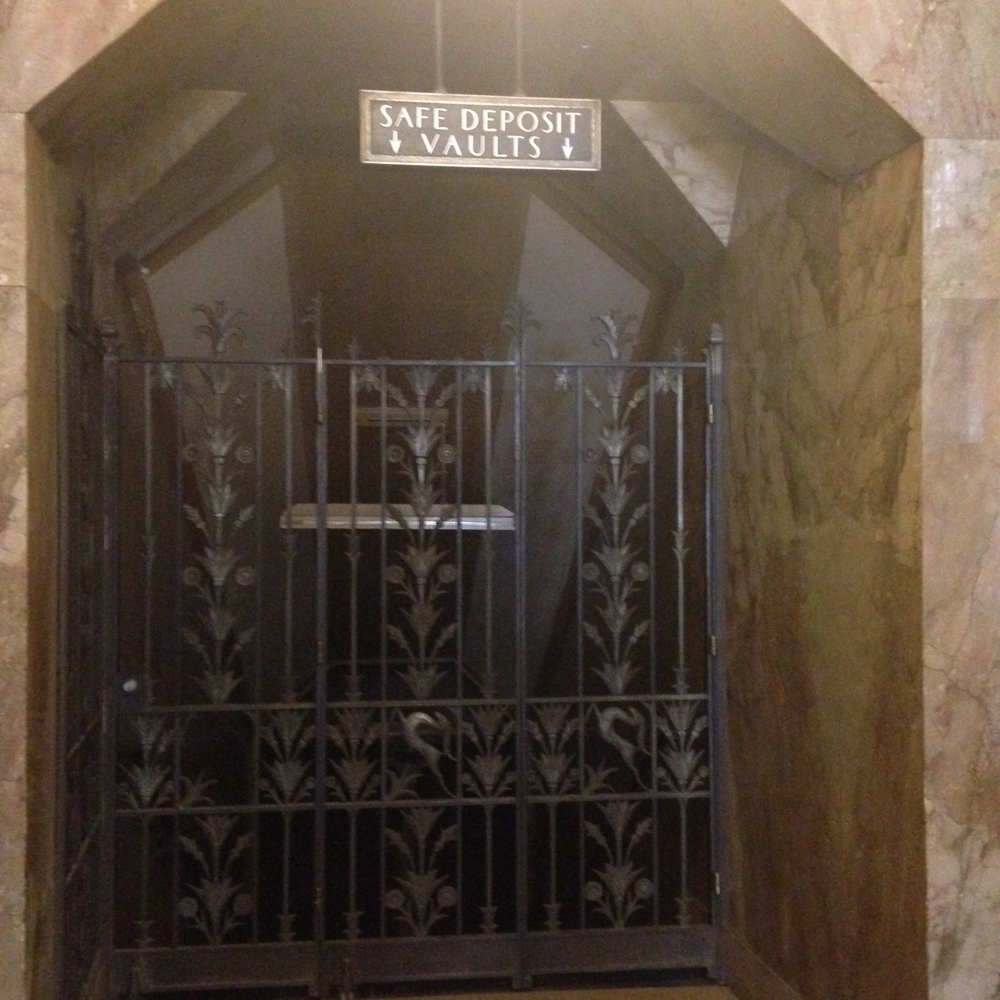Exploring OKC: Remembering Tragedy
It was a nice, calm spring day. I was in 2nd hour 8th grade social studies class when our teacher, Mr Marty, got a phone call and ran to turn on the TV in the front of the classroom. We were suddenly watching a scene that seemed out of an action film: a gaping hole in a large office building, surrounded by rubble, fire trucks, and rescue workers. I remember being shocked by the destruction to the Alfred P. Murrah Federal Building, but I don’t remember much else from that morning. The memories of that morning have faded, not only with time, but - as I'm sure it is with many people - with the larger impact of the World Trade Center attacks of 2001.
Almost 20 years later, whatever memories remained of that morning and of emotions came flooding back, though, as I sat in a nondescript replica of a government office, listening to a likewise nondescript, routine water rights hearing take place. 2 minutes into the tape-recorded meeting, there was a large explosion, followed immediately by sounds of chaos and turmoil. Almost immediately after that, a cacophony of reporters, news anchors, sirens, bombarded my ears. It wasn't like I was watching the aftermath of the 1995 bombing again; this time, it felt like I was a part of it. I couldn't tell you the last time I felt such powerful emotions.
As I mentioned elsewhere, I’m grateful for the time that we have to explore cities while on tour with the Grinch musical. Our first full week of performances was in Oklahoma City, and there were many surprises in town: a wonderful art museum, the First National Building, the American Banjo Museum, and some great stores and restaurants. Yet I knew before arriving that visiting the Oklahoma City National Memorial and Museum would be something I had to do, no matter what.
While remembrances of 9/11 are doused in patriotism and nationalism, everything at the National Memorial was very personal. Very Human. The event memorialized is obviously very specific, but there is a larger picture presented here: one of human suffering, of good versus evil, and, most importantly, the ability of humans to come together to collectively grieve and support each other at times of crisis.
“We come here to remember those who were killed, those who survived and those changed forever. May all who leave here know the impact of violence. May this memorial offer comfort, strength, peace, hope and serenity.”
After the shock of "witnessing" the initial impact, the remainder of the museum is much more calm. They chronicle the rescue efforts, memorialize those who died, document how the FBI was able to track down the offenders. It ends with a beautiful view of the symbolic memorial: next to a room that was damaged in the explosion and is kept as it was found, you look out onto the peaceful reflecting pool and Rescuers' Orchard, see the strong elm tree that survived the bombing, and, across the reflecting pool, the 168 chairs representing everyone who died that morning.
The grounds of the memorial are still and peaceful, even though they're amidst a revitalizing downtown area. Open all day and night, year-round, one gets the impression that this is indeed a place to come and remember and pay tribute to the people who died - many of whom were humble federal government workers, the kind you run into any time you have to fill out paperwork, in countless offices across the country. the kind who come home to their families at 5pm for a night of a home-cooked meal and watching the latest sitcom on ABC. I appreciated that there were no metal detectors to go through. There was no searching of backpacks and handbags upon entering the grounds. In an era of overly-heightened security and fear, this memorial still lets someone come in off the streets and enter unharassed. You can spend time wandering between the 9:01 and 9:03 gates (meant to represent the human spirit before and after the bombing). You can walk up to the individual chairs. You can view tributes left on the chain-link fence, and see a small part of the original building's foundation that is still standing.
From the moment I approached the memorial, I felt that it was done “right,” whatever that may mean. A visitor is given the time and a deserving place to consider that morning, to pay respect to those who died, to recognize the good that can come from a horrific tragedy. Pictures do not do it justice; in a place like this, pictures only serve as a form of meta-memory. Yet that is what I will take with me away from the OKC memorial: memories of an amazing tribute to those overtaken by a large tragedy on that clear spring day back in eighth grade.
There are more pictures of the memorial here. Feel free to share your memory of this memorial or the event down below.
Pax.





